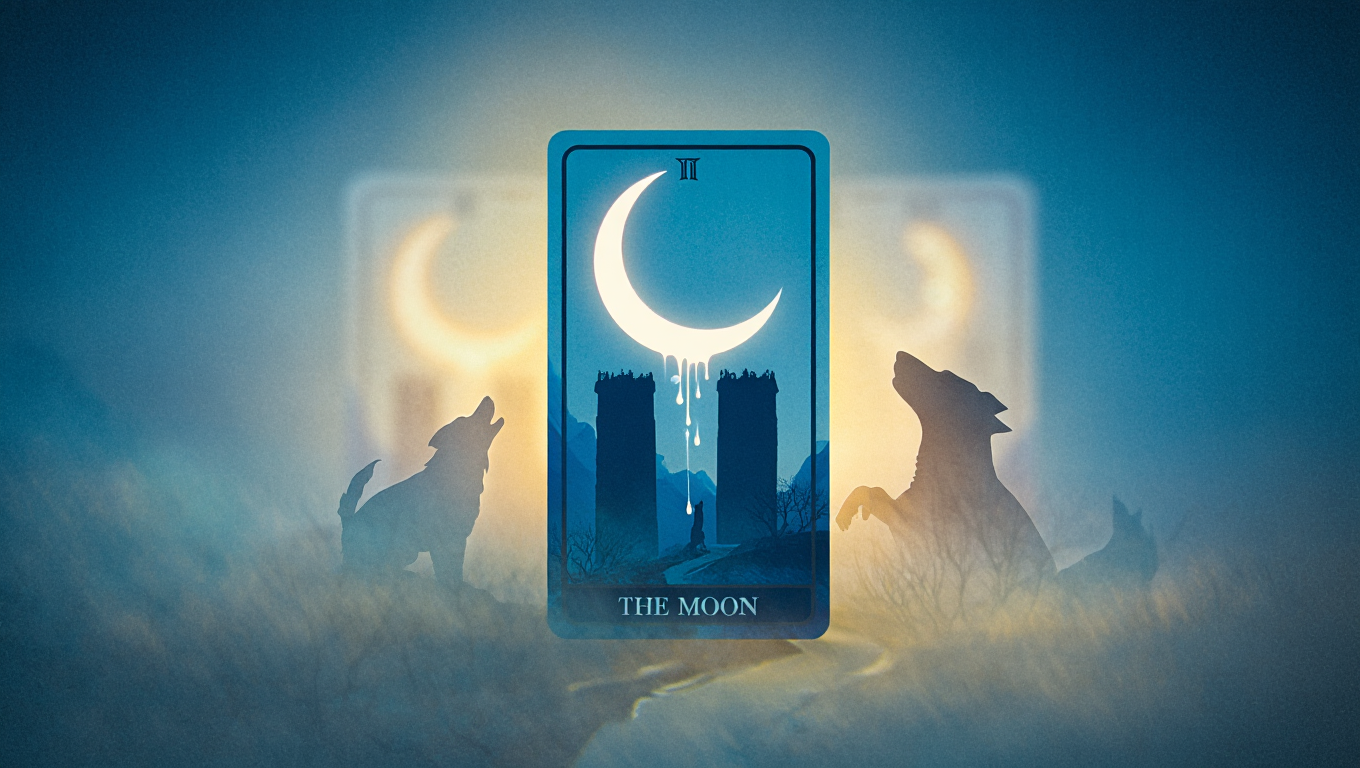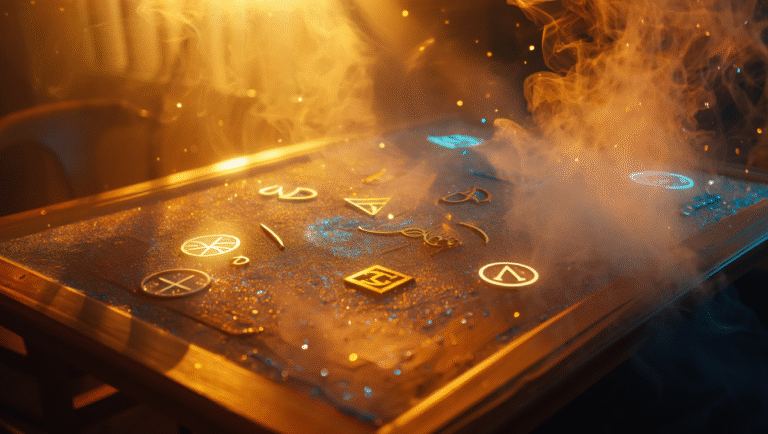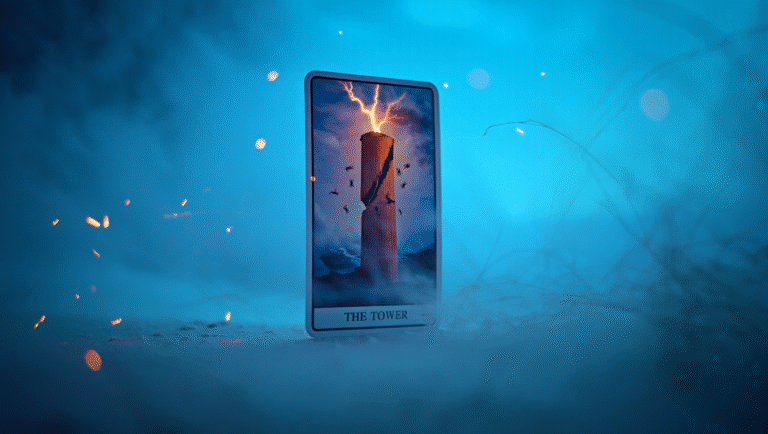Lesson 5: Court Cards in Tarot
When you’re learning tarot, few things trip people up faster than court cards. Pages, Knights, Queens, and Kings — they look regal, but what do they mean in a real reading? If you’ve ever stared at a court card and thought, “Okay, but… who is this?” you’re far from alone.
Why Court Cards Cause So Much Confusion
The minor arcana court cards are notorious for ambiguity. Sometimes they represent people, sometimes they’re a mood, sometimes they’re a situation. Unlike the blunt force of a Tower or the clear story in the Lovers, court cards demand context.
But here’s the thing: You don’t have to memorize dozens of personalities. Court cards are flexible tools. Let’s break down their structure and see how to actually use them — without the mystical fog.
The Court Card Cast: Pages, Knights, Queens, Kings
- Pages: Youth, learning, messages, curiosity
- Knights: Action, pursuit, movement, boldness
- Queens: Maturity, nurturing, receptivity, mastery of their suit’s element
- Kings: Power, direction, leadership, outward expression of their suit’s quality
Each appears in all four suits (Cups, Pentacles, Swords, Wands), so you get 16 total. That’s a lot of personalities, but it’s really a spectrum of energy from beginner (Page) to boss (King).
Practical Case: The “Workplace Shuffle”
Imagine you’re doing a quick reading before an important meeting. You draw:
- Knight of Swords (Present)
- Queen of Pentacles (Obstacle)
- Page of Cups (Advice)
Instead of panicking, let’s break down what these cards say in context:
“Court cards often show up as roles you’re playing, not just personalities. Think of them as hats you wear — sometimes you’re the Knight, sometimes you’re the Queen.”
Knight of Swords: You’re entering the meeting fired up, ready to communicate and debate. Speed and logic are your strengths right now.
Queen of Pentacles: The obstacle? Maybe you’re struggling to balance the practical needs (budget, logistics) with your energetic approach. Are you missing practical details?
Page of Cups: Advice is simple: stay open, listen, and be willing to learn. The Page of Cups invites you to approach the meeting with curiosity, not just expertise.
Step-by-Step: Interpreting Court Cards in Any Spread (in 15 Minutes)
1. Ask: “Is this a person, a mood, or a situation?”
- If the question is about another person — court cards can point to them (age, role, attitude).
- If it’s about you — it often reflects your current energy or approach.
- If it feels situational — the card is describing the vibe or dynamics at play.
2. Pair the Court Card Rank with Its Suit
Pages: Beginner’s mind. Pages of Cups? Emotional openness. Pages of Swords? Curious communication.
Knights: Taking action. Knight of Pentacles? Steady, methodical work. Knight of Wands? Bold, creative leaps.
Queens: Holding space. Queen of Swords? Wise, clear, honest. Queen of Cups? Deeply empathetic.
Kings: Directing the energy outward. King of Wands? Charismatic leadership. King of Pentacles? Financial authority.
3. Look for Court Card Patterns in the Spread
- Multiple Pages: A time of learning, new beginnings, or messages
- Multiple Knights: Action, travel, things moving fast
- Multiple Queens: Nurturing, networking, emotional maturity
- Multiple Kings: Leadership, authority, external control
4. Use This Quick Reference Table
| Name | Key Feature | Suit/Element | Typical Role | Amazon Deck Example |
|---|---|---|---|---|
| Page of Cups | Curiosity, messages, emotional openness | Cups / Water | Student, messenger, new feelings | Check price on Amazon |
| Knight of Swords | Action, debate, quick decisions | Swords / Air | Challenger, activist, fast talker | See today’s deal |
| Queen of Pentacles | Practicality, nurturing, resourcefulness | Pentacles / Earth | Provider, manager, caretaker | Check price on Amazon |
| King of Wands | Leadership, vision, inspiration | Wands / Fire | Entrepreneur, visionary, leader | See today’s deal |
Court Card Cheat Sheet: 15-Minute Reading Routine
- Shuffle your deck and set your timer for 15 minutes.
- Draw up to 3 cards with a specific question in mind.
- Identify any court cards. Ask yourself: “Is this me, someone else, or the situation?”
- Match the court card’s rank and suit to the real-life role or energy (use the table above if needed!).
- Jot down one action step for each court card drawn. (Example: “Queen of Pentacles — focus on practical solutions, nurture my team.”)
- Review your notes and take one small action inspired by your reading.
Recommended Tarot Decks for Court Card Clarity
- Rider-Waite Tarot — Classic for learning court personalities
- Light Seer’s Tarot — Modern, expressive court cards
- Modern Witch Tarot — Diverse, relatable court energies
Pros, Cons, and Who Court Cards Are For
- Pros: Flexible, show both people and energies, deepen a reading.
- Cons: Can be vague without context, easy to overthink, sometimes feel “out of place.”
- Best for: Readers interested in real-life dynamics, self-discovery, and advice about relationships or work roles.
Further Resources & Tools
- Biddy Tarot: The Ultimate Guide to Tarot Court Cards
- Labyrinthos: Court Cards in Tarot
- Book: “Understanding the Tarot Court” by Mary K. Greer
Final Thoughts: Keep It Simple, Keep It Real
If you get stuck with court cards, don’t panic. Focus on their “role” in your life or the situation at hand, not memorizing every symbolic detail. Over time, you’ll notice patterns — and the court cards will start to feel like familiar faces at your own round table.
“You don’t have to be a tarot master to use court cards well. Stay curious, experiment, and let the story unfold.”
Some links in this post are affiliate. You pay the same price, and this blog may earn a small commission. Thanks for supporting honest, practical tarot guidance!




